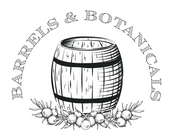ISLAY
Islay (pronounced eye-La) is a whisky producing island off the West coast of Scotland. Some of the most famous whiskies in the world are produced here and visitors flock to the island every year to visit distilleries and have a dram with the locals. Islay holds an annual Malt and Music Festival every May and this is a great time to visit, as there are plenty of tastings on offer, as well as limited edition bottles for sale. Sometimes the sunshine even makes an appearance.
Much of Islay’s whisky can be distinguished by its peaty, smoky flavours and its strong dry finish. This is due to the use of peat to heat the kiln as the barley is malted. In fact, the world’s most heavily peated single-malt can be found on Islay in the shape of Bruichladdich’s experimental Octomore. This has a PPM (Phenol parts per million) measurement of 167, a massive increase on Islay’s next most peated whisky, Ardbeg, which measures in at 54 PPM.
Not all whiskies on the island have such strong smoky flavours however. Bunnahabhain (3PPM) is one such malt. A smooth initial palate with sweeter notes, followed by a dry finish, make this a great option if you are not a fan of the smokiness that many of Islay’s whiskies, such as Laphroiag, Ardbeg and even Bowmore, are famous for.
SPEYSIDE
Speyside is a region in the East of Scotland that was recently recognised by the Scottish Whisky Association (SWA). Prior to this, it was a sub-region that was considered part of the Highlands. Here you will find Scotland’s largest concentration of distilleries, over half of the overall number found across the country. Between the late 1800s and early 1900s, distilleries shot up all over this region, with at least 21 new distilleries opening in the 1890s alone.
One of Speyside’s main tourist attractions, alongside the distilleries, comes in the form of a cooperage that has been in operation since 1947. Even though few of the casks made here end up housing malts made by the local distillers, it is nonetheless interesting to see the skills and techniques that go into making high quality barrels.
The malts found in Speyside are generally considered the sweetest in Scotland. Many of the distilleries here mature their product using sherry casks, which impart rich and heavy flavours on the drink. Some of the most famous bottles that fall into this category include those made by Glenlivet, Macallan and Aberlour. While these malts obviously have their differences, a light spice and subtle vanilla flavours can generally be detected.
As afore mentioned, there are some exceptions to these rules and in Speyside a variety of lighter, subtler, more complex malts can found. These come from distilleries such as Glen Moray, Glenlossie and Speyburn. While these are still relatively sweet, they feature much fruitier notes.
HIGHLANDS
The Highland region is the largest in terms of land mass. It is also the place where you will find the biggest variety of flavours and notes across the distilleries. Certain similarities can be found among some of the whiskies though, and these can be grouped into sub-regions of their own.
In West Highland malts, a hint of smokiness can be detected, although this does not compare to the levels that can be found on Islay. On top of that, these whiskies tend to have a dry finish. A good example is the Ben Nevis 10 Year Old. Within this bottle you will find soft, sweet citrus notes and a long coffee like finish.
North Highland whiskies certainly have a flavour of their own, due to the conditions in which they are made. The strong sea winds and the northern soil have lasting effects on the Scotch made here. Many of these malts are delicate and light bodied. A subtle saltiness can often be detected, along with a relatively strong spice. Dalmore, Glenmorangie and Old Pulteney are some of the most famous North Highland malts that come highly recommended.
Another sub-region of the Highlands is the Islands (excluding Islay). It is very hard to find major characteristic consistencies in the whiskies made here, due to the islands being found all around Scotland, from the West to the East and even in the North. Some of the most famous island whiskies and their respective homes include: Talisker, from Skye; Arran, from the Isle of Arran; Isle of Jura, from the Isle of Jura; and Highland Park, from Orkney. These whiskies have considerable differences in their nose and flavours, however, all of them have managed to become favourites among whisky lovers across the country and around the world.
LOWLANDS
In the early 1800s the Lowlands was Scotland’s most active whisky producing region. It was here that industrial scale whisky production first began. The area was famous for triple distilling their whiskies, instead of twice distilling like most of Scotland’s distilleries.
Today there are only 3 major distilleries left in the area. So, what happened? Simply put, the area’s industry all but collapsed during the difficult economic period that was felt across the world between the first and second world wars. The region’s whisky business never fully recovered and that means your choice of lowland whiskies is now very limited. That is, of course, unless you want to pay large fees for bottles dating back to before the closures.
The malts produced here today tend to be quite a bit lighter, softer and more delicate than those found in the other areas of Scotland. Some have sweet flavours and this, combined with the afore mentioned traits,make them great choices for those just getting into whisky, or for drinking after a heavy meal. Auchentoshan is the most famous of the three remaining distilleries, sitting on the outskirts of Glasgow. They are proud to say that they still triple distil their product to this day and their “3 Wood” expression is particularly pleasing.
CAMPBELTOWN
Once upon a time Campbeltown was bursting at the seams with distilleries. There were at least 30 on this relatively small stretch of land that juts out from Scotland’s West Coast. This dense population, along with the unique flavours they created, made Campbeltown’s malts famous.
Much like the Lowlands, only three distilleries remain today and this is also a result of the economic depression of the early 1900s. These are Glen Scotia, Longrow and Springbank.
All three have elements that distinguish them from each other, but they also have similarities. An element of smokiness gained from the use of peat is a common theme. They also sport warming, wintery flavours including toffee apples, plum and chocolate. Longrow is the sweetest of the three, lying between the more delicate Glen Scotia and the fuller, slightly richer Springbank.



